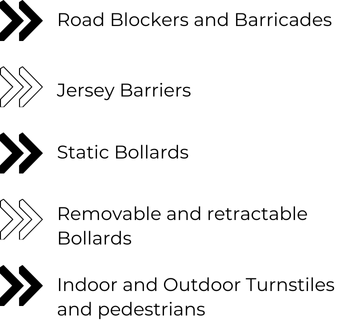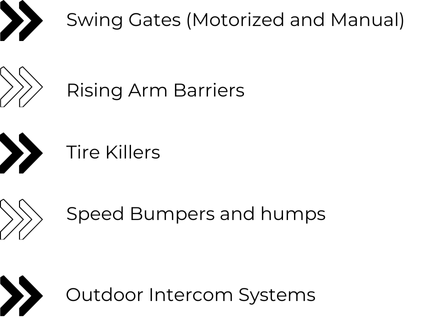Physical Security
System
A Physical Security System refers to a comprehensive framework of measures and technologies designed to protect physical assets, facilities, and personnel from unauthorized access, intrusion, vandalism, and other potential threats. This system integrates various components to create a layered defense approach tailored to the specific security needs of different environments, such as:
- Perimeter Security: This includes barriers such as fences, walls, gates, and bollards to control and restrict access to the premises. Perimeter security may also incorporate sensors and alarms to detect breaches.
- Access Control Systems: These systems manage and monitor entry and exit points, allowing authorized personnel to access specific areas based on credentials such as keycards, biometrics (fingerprint or facial recognition), PIN codes, or RFID tags. Access control systems help prevent unauthorized individuals from entering secure areas.
- Surveillance and Monitoring: Video surveillance cameras are deployed throughout the facility to monitor and record activities in real-time. Video feeds are typically monitored centrally or recorded for later review, aiding in incident investigation and deterrence of criminal activities.
- Intrusion Detection Systems: These systems use sensors (such as motion detectors, glass break detectors, and vibration sensors) to detect unauthorized entry attempts or unusual activities. Intrusion detection systems can trigger alarms and alert security personnel to respond promptly.
- Alarm Systems: Audible and visual alarms are activated when specific conditions are met, such as unauthorized access, breach of security zones, or activation of intrusion detection sensors. Alarms alert occupants and security personnel to potential threats and prompt immediate response actions.
- Physical Barriers and Deterrents: In addition to technological measures, physical security systems may include barriers like vehicle barriers, security guards, and signage to deter unauthorized access and enhance the overall security posture of the facility.
- Integration with Security Operations: Modern physical security systems often integrate with security operations centers (SOCs) or command centers, where personnel can monitor and coordinate responses to security incidents in real-time.
The effectiveness of a Physical Security System lies in its ability to combine these components into a cohesive strategy that addresses potential vulnerabilities and threats, mitigates risks, and protects assets, people, and information within the secured environment. By deploying a robust physical security system, organizations can safeguard their facilities, maintain regulatory compliance, and ensure the safety and security of their personnel and visitors.

